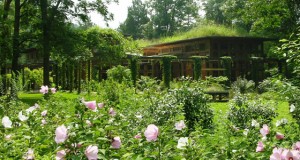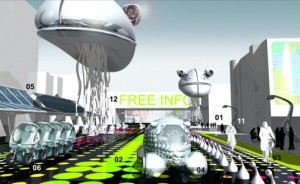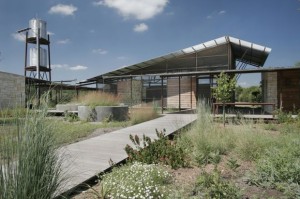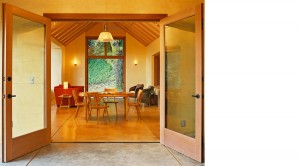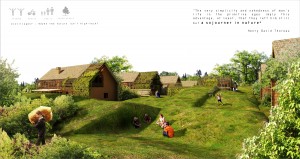Blog
Sustainable (Design) Defined | Part IV | Logics
August 19, 2013Our journey to define sustainability continues with this post, with a focus on design, architecture, and industries connected with buildings and manufacturing. As an architect I have to begin to narrow the definition to areas where I can expect to have an effect, and international politics and banking for example are not my turf. A professional and academic colleague, Martha Bohm, gave me an article to read about five years ago that changed the way I think about sustainable architecture and made sense of the competing frameworks that are put forward to guide design. It’s one thing to cite the Brundtland Commission or Triple Bottom Line as the basis of change, but quite another to anchor those calls to action in a coherent and shared values system that can sustain positive action over time. That’s because individuals (and groups) are committed to sustainability for different reasons.
Background: Professors Simon Guy and Graham Farmer studied the underlying social constructs of sustainable design as a central part of their research at NewcastleUniversity. They published an article together in 2001 in the Journal of Architectural Education (JAE) entitled Reinterpreting Sustainable Architecture: The Place of Technology. It was awarded Best Article for that academic year. A copy of the article can be found here: (Professor Guy has been at the University of Manchester since 2005 and is presently Head of the School of Environment and Development, and Director of the Manchester Architecture Research Centre.)
Guy and Farmer surveyed all available literature that referred to sustainable architecture at the time and identified six different social constructs, or logics, implicit assumptions that underlie sustainable design and theory. They have continued to explore the ideas in books and publications. While a survey in 2013 would yield a different result, I believe there are fundamental truths inherent in the categories they identified at the time that are still relevant today. As JAE noted, “Most of us drawn to the topic have assumed that there is one set of interrelated values that constitute sustainable development. These authors have, however, demonstrated the existence of six logics that are at times in fundamental conflict…”
Here then are the six, with descriptions I have taken the liberty to paraphrase and reuse language from original. I’ve also added six design images that I think represent the six logics reasonably well. A single logic tends to be dominant. Multiple logics can coexist, but some logics are by nature contradictory:
Eco-Tecnic: Engineer solutions through policy, incentive programs and codes/ metrics (e.g. LEED)/ quantify and solve / eco-efficiency/ compact transit-oriented cities as efficient organisms /modern/ high-tech/ global perspective/ cap & trade/ in PPP terms, more profit+planet
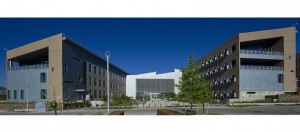
[image: NREL Research Support Facility, LEED Platinum]
Eco-Centric: Tread lightly on the earth/ harmony with nature/ environmentalism (romanticism of nature?)/ protect nature and increase biodiversity/ decentralized / limited ecological footprints/ renewable / recycled / in PPP terms, more planet than profit
[image: Bernheim Arboretum, William McDonough + Partners]
Eco-Aesthetic: envision of the future and people will be transformed/ iconic/ new age/ non-linear / consciousness-changing/ built expressions of differentness using early biophilia, biomimicry as inspiration / idea of green roof and urban agriculture/ alternative transportation/ postmodern/ architectural/ rejection of conventional building forms including vernacular?
[image: Smart Dot concept by Terraform One]
Eco-Cultural: local bioregional and cultural characteristics / authenticity / typological / based on phenomenology, cultural ecology / regional low-tech/ vernacular / opposite of international style
[image: Government Canyon Research Center, Lake Flato Architects, photo Chris Cooper]
Eco-Medical: safe healthy products/ “natural”/ healthy home movement / non-toxic materials / indoor air quality/ health product declaration / passive / tactile / quality of life
[image: Wine Creek House, Siegel & Strain Architects]
Eco-Social: flexible/ decentralized / participatory/ environmental sustainability/ social ecology/ home/ environmental sustainability can’t happen without social transformation at individual, local level first
[image: Eco-Village Wroclaw, Marcel Matusz, Wroclaw University of Technology, Faculty, Participants Favorite award from Archiprix Moscow 2013]
In a sense, my search for a universal definition of sustainable design ends here, with multiple logics that can be valid in different contexts. My approach favors a statement of design principles that can remain valid in any logic. The differences in values appear when it comes time to establish priorities and initial actions on a project. The next post will look at principles in nature.
Sustainable Defined: Part III The Triple Bottom Line
August 16, 2013Background: The Brundtland report, Our Common Future, marked an agreement that development needs to be approached holistically, including environmental considerations—not simply as a political process that mediates between capitalism (investment for financial gain) and public welfare (that protects or incentivizes social good). It recognized that economic, social, and environmental spheres are interconnected, requiring a systems approach to identify optimal solutions. This basic framework alliteratively named People-Planet-Profit by John Elkington (and Economy-Ecology-Equity by William McDonough) has been developed into the tool of Corporate Social Responsibility (a.k.a. Corporate Sustainability et al).
People-Planet-Profit, or the Triple Bottom Line, grew out of a global call for change–to address planetary limits and essential needs of the world’s poor. It evolved to focus on measurement and improvement over past performance with regard to environmental and social “impacts.” An entire culture of corporate and institutional sustainability metrics and reporting is now in place. This is certainly an improvement over the more common practices of denial that were the standard a generation ago. From the perspective of architecture and sustainable design however, a number of things are lost in this definition (or were never in the original script). Most glaring is the assumption that if our existing social structures and practices were simply more efficient somehow, then we would eventually solve the sustainability problem.
TBL is a technocratic approach, suggesting that engineering and policy changes within existing social and political channels can yield fundamental change. It attempts to measure social and environmental efficiency of practices rather than questioning many of the practices themselves. It allows, for example, for increasingly energy-efficient and “eco-friendly” production of trivial, unloved (but recyclable) consumer goods. My skepticism as a designer is best summarized in the iconic Einstein quote: “Problems cannot be solved at the same level of consciousness that created them.” Architects and designers are trained to question the initial statement of a design problem—it’s what makes us designers. Somewhere out there is a definition of sustainability for design that accounts for this ability to envision alternative futures. It is important for current practices to be measured and improved in order to have less negative impact, but even more important is the kind of innovation that will yield different practices altogether.
NEXT: There are different ways of looking at sustainability other than the triple bottom line—perspectives that co-exist with one another or contradict one another. These social constructs do not use the same measuring stick as the People-Planet-Profit approach. They may not even start with a bottom line that is recalculated to be a different line. Such constructs may not be of use to organizations seeking to make steady measurable positive change. It is clear, however, that other “logics” exist. And that is the subject of the next, and possibly final post on the topic.
Sustainable Defined: Part II
August 14, 2013The two most common definitions of sustainability—from the Brundtland Commission and the subsequent “triple bottom line” –must be understood in context. Once they are, it is possible to see how well they form the basis for a design framework. Both definitions are about sustainable development; the former addressing international policy and the latter forming the basis for corporate social responsibility.
The definition from the 1987 Brundtland Commission of the United Nations, titled “Our Common Future,” is probably the most widely quoted:
Sustainable development is development that meets the needs of the present without compromising the ability of future generations to meet their own needs. It contains within it two key concepts:
1. the concept of ‘needs’, in particular the essential needs of the world’s poor, to which overriding priority should be given; and
2. the idea of limitations imposed by the state of technology and social organization on the environment’s ability to meet present and future needs.
The full 247 page report can be found here: Our Common Future
The “two key concepts” make it clear that this definition is about establishing development policies that are fair and global, establishing steps toward a “progressive transformation of economy and society.” The report proposes that physical transformations that protect and preserve global resources can be approached in ways that are not specific to any social organization (capitalist, socialist etc.)
As a designer however, it is hard to find guidance from such a definition. What is “need” when we are asked by a client to find a design solution? The definition seems to be used in reports simply to validate that all nations have agreed, in concept, that current practices are not sustainable, and therefore need to be better. At that point, in most cases, the technocratic approach of managing current practices more efficiently begins to drive the design process.
As architects serving clients, we step outside our own culture at our own risk. We have codes and regulations and institutions that operate a certain way, representing the health and welfare of the population we belong to, and enforced by laws that are not easily changed. This is probably why the biggest leaps forward are in the areas of least regulation, or where dramatic new technology, high (like energy management software) and low (like green roofs) can be applied to existing practices to achieve positive effects without significantly affecting the social institutions inside.
In the next post, I will take up the question of performance metrics in the triple bottom line model, and how well these measure the progressive transformation of economy and society.
